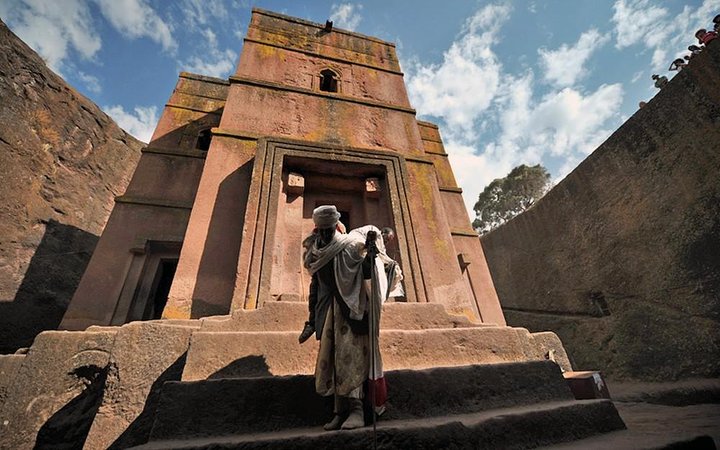Unveiling the Mystical Charm of Lalibela’s Rock-Hewn Churches
Drawn by the allure of Ethiopia’s mystical charm, I embarked on a journey to Lalibela to explore its renowned rock-hewn churches. This UNESCO World Heritage Site promised a blend of history, spirituality, and architectural wonder.
A Journey to the Heart of Ethiopia
As a wildlife photographer with a deep love for Africa, my travels have often taken me to the continent’s most remote and breathtaking landscapes. Yet, my recent journey to Lalibela, Ethiopia, was unlike any other. Known for its mystical charm and historical significance, Lalibela is home to the astonishing complex of rock-hewn churches, a UNESCO World Heritage Site that draws visitors from around the globe.
Arriving in Lalibela, I was immediately struck by the town’s serene beauty. Nestled in the highlands, it felt like a place suspended in time, where the past and present coexist in harmony. The air was crisp, and the landscape was dotted with traditional Ethiopian homes, their thatched roofs blending seamlessly with the surrounding hills.
The anticipation of exploring the rock-hewn churches was palpable. These architectural marvels, carved from red volcanic rock during the 12th and 13th centuries, are often referred to as the ‘New Jerusalem’ and ‘The Eighth Wonder of the World.’ As I prepared to embark on this spiritual journey, I couldn’t help but feel a sense of reverence for the history and culture that these churches represent.
Exploring the Rock-Hewn Churches
The day began with a visit to the Northwestern group of churches, including Bet Medhane Alem, Bet Maryam, Bet Meskel, Bet Danaghel, Bet Mikael, and Bet Golgotha. Each church was a testament to the ingenuity and devotion of the people who built them. The intricate carvings and unique architectural styles were awe-inspiring, and I found myself lost in the details of each structure.
As I wandered through the churches, I was reminded of the importance of preserving such cultural treasures. The churches of Lalibela are not just historical monuments; they are living places of worship that continue to hold deep spiritual significance for the local community. It was a humbling experience to witness the devotion of the pilgrims who had traveled from afar to pay their respects.
In the afternoon, I explored the second group of churches, including Bete Amanuel, Bete Merkorios, Bete Abba Libanos, Bete Gabriel-Rafael, and the iconic Bete Giyorgis. The latter, with its cross-shaped design, is perhaps the most famous of all the churches in Lalibela. Standing before it, I felt a profound connection to the past, as if the stones themselves were whispering stories of centuries gone by.
A Transformative Experience
My visit to Lalibela was more than just a trip; it was a transformative journey that touched my soul. The spiritual depth and cultural richness of the place left a lasting impression on me, one that I will carry with me long after I have left its hallowed grounds.
As a travel writer and wildlife photographer, I am always seeking experiences that blend adventure with sustainability. Lalibela offered both in abundance. The town’s commitment to preserving its cultural heritage while welcoming visitors with open arms is a testament to the power of responsible tourism.
For those who seek a journey that transcends the ordinary, I highly recommend a visit to Lalibela. It is a place where history, spirituality, and natural beauty converge, offering a glimpse into a world that is both ancient and timeless. Lalibela’s Rock-Hewn Churches is an experience that will stay with you forever, a reminder of the enduring power of faith and the human spirit.












































